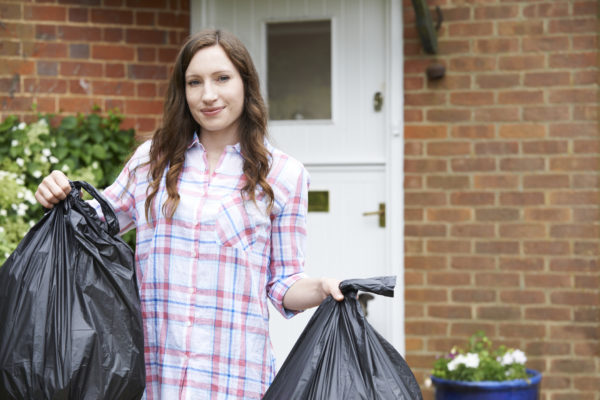
You’re probably busier than ever these days, trying to fit work or school, family time and chores into days that seem much too short. But you still care about the environment and want to do what you can to help. So, all you overburdened folks, this post is for you. Check out this list of five relatively quick and easy things you can do to help the environment by generating less waste.
- Reduce snail mail. It seems like people are using the mail less than they used to, so why is your mailbox still crammed with wasted paper? One way to fix this is by switching any bills you can to paperless billing. (To switch to paperless billing for your Granger account, fill out this form.) Another trick is to get yourself off direct mail lists. You can do this individually by calling the company directly, but there are also some services out there that will do it for you for many companies at once. For more information, visit the Federal Trade Commission’s website. (This site will also help you with unsolicited phone calls and emails.)
- Ditch the disposables. Sometimes it’s difficult not to use items that are disposable, but there’s also a lot of low-hanging fruit out there. Drinking tap water or filtered water out of a reusable cup, drinking your coffee out of a real mug or travel mug, using cloth grocery sacks instead of plastic bags and opting for reusable containers instead of plastic Ziplock-style bags for storage are all simple ways of making a huge dent in the waste you’re generating.
- Say no to the unnecessary. If you’re headed home or back to the office after grabbing that take out, you probably don’t need that plastic silverware. Don’t like ketchup with your fries? Don’t take any. If you know you’re not going to use the random tchotchke they’re giving away at your bank, say “no thank you.” You’d be surprised at how much less junk is accumulated when you only take what you know you need or will use.
- Pay attention to packaging. When you’re shopping for groceries or other items, you might not spend much time considering packaging, but maybe you should. If you can’t decide between two seemingly comparable products, look at how each is packaged. Does one obviously contain less wasted material or more packaging that’s recyclable? If so, that makes your decision a lot easier.
- Invest in quality. There’s a saying you may have heard before: “buy well, buy once.” The gist of this idea is that if you spend a little more to get a product that will last longer and not break before you get it out of the store, you’ll end up spending less in the long run. But there’s another advantage to that as well. Buying quality products should mean you’ll generate less waste since you won’t have to throw them away and buy something new.
